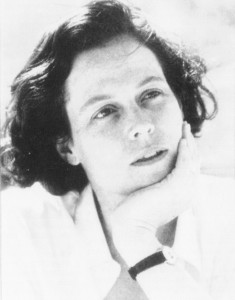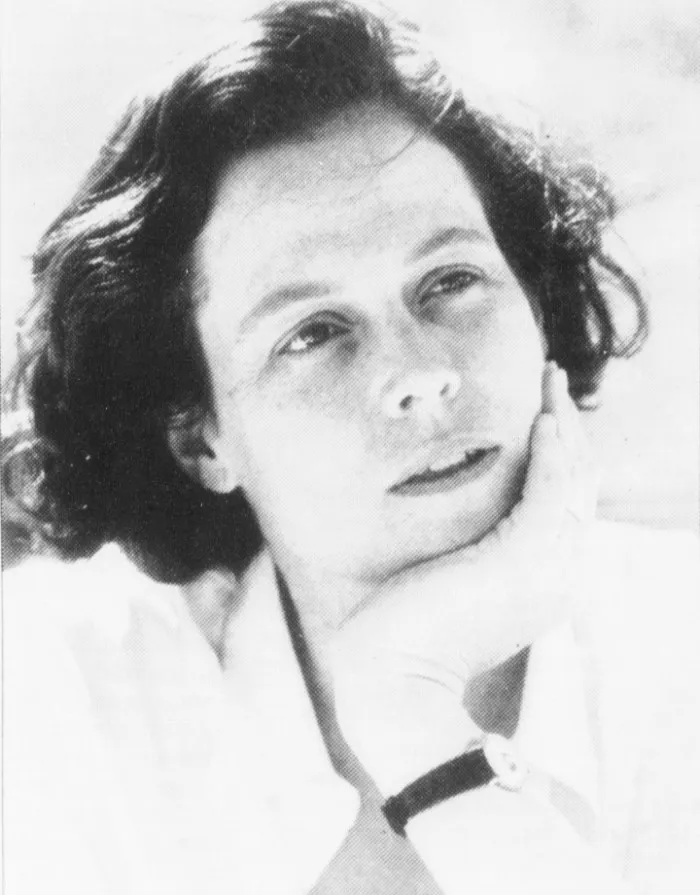Stanford undoubtedly has a long and storied history with student activism and producing decorated public figures. In a 1989 interview with The Daily, actress Sigourney Weaver ‘72, most known at the time for her role in the Alien series, reflected on her heavy involvement in student protests, her career path and her overall Stanford experience. Click here for the original version in our digital archives.

Sitting in front of Tresidder Union during a June visit, Sigourney Weaver recalled the drama of her days at Stanford. Little of it occurred on stage; she recalled the drama of teachers in the classroom, protests in White Plaza, dormmates in her two Wilbur Hall homes.
She remembered those years as passionate, outrageously fearless and formative.
Weaver graduated from Stanford in 1972 with a bachelor’s degree in English. Back on campus seventeen years later, she proclaimed her decision to transfer from Sarah Lawrence College to Stanford after freshman year to be the best move she ever made.
It was at Stanford that she discovered her love of acting. But she didn’t find it in the drama department. “I thought the drama department at the time was extremely stuffy. They were always doing very safe productions. So I was part of a group that we founded, called the Palo Alto Company, which sprang out of a defunct frat, called Beta Chi, the hippie frat. We did the most outrageous theater.
“We did a lot of things that the drama department probably would have said, ‘Well, you’re not ready to do that.’ We just did them all. That’s where I discovered how much I enjoyed doing theater. “I miss getting made up with I0 other people in a little bathroom with a little broken piece of mirror for all of us. It was all so much more formal at Yale (Drama School). I think the main reason I became an actor was I learned so much and had so much fun here.”
Weaver hadn’t planned on being an actor and she paints a rather self deprecating picture of her acting ability in those days.
“I was not an outstanding person in the group. If someone had asked then who would be successful in the company, I would have been one of the last picked. . . . It’s a very unfair business.”
“I was very torn. I really wanted to be a journalist. I really wanted to be a writer. And I was planning to get my Ph.D. in English. I was taking all these honors courses my last year and we began to study criticism of criticism and it was getting pretty dry.”
So, I went to see my adviser in the English Department and said, is it going to be like this in graduate school?’ And he said, ‘Yeah, I’m afraid so.’ And I said, ‘I’ve got to get out of this.’”
Off stage and on, she played the role of an early ‘70s student impeccably. Walking through White Plaza, she said, rekindles memories of protests, demonstrations, arrests, and riotous antics.
“One year we had a protest fair, with a booth where you could throw a brick through a plate-glass window for all those who weren’t doing it for real.”
Despite the flourish of her life here, she recalled that it wasn’t that way for all students. Students, of course, were not all united in thought or action. It’s just that flourish is more easily remembered than hesitance.
“I recall a polarity among the students between the people who were coming to Stanford to get a good start and no matter how much tear gas was floating around, they were in their dorms playing cards or studying while the rest of us were out living the Revolution.
“I think a lot of us understood we were getting a very privileged education and perhaps felt some embarrassment from it.”
Since then, she has admirably steered clear of embarrassment. A philosophy for sanity in her business keeps Weaver unscathed by the cut-throat movie world. She makes sure she enjoys it all, even the shameless advertising of her Ghostbusters pin and watch, which she somehow managed to wear elegantly.
Weaver said she only appears in movies that she would like to see, and screeched, holding her stomach, at the suggestion of choosing her roles according to a preferred image. “I don’t care how great a part is. It it’s not part of a story that I find interesting, I would never want to do it. And also, I like to be in movies that people do end up seeing.
“So I care a great deal about who the director is: Is it someone who is gong to fink out halfway through and give up his vision, or is it someone who will fight and scream and hurl himself at the studio heads to get what he needs. He or she. That’s very important.”
“I’ve developed a philosophy about this business. Despite the things that you want to do, are not given to do and break your heart, there’s always something just as good if not better just around the corner.”
“For instance, I was up for two leads and I screen-tested for them and I lost both of them, and then I was offered this small role in ‘I he of Living Dangerously’ by Peter Weir. And I thought ‘Well, what the hell, and it turned out to be one of the greatest experiences I ever had.”
Although she said her best cinematic performances are “still ahead of me, out of those already made Weaver ranked “The Year of Living Dangerously” and “Gorillas in the Mist” as her favorites. Both take place on other continents, and her favor for them suggests the continued influence of two mentors from her college years. She remembered as a student looking up to both Jane Goodall, one of the first zoologists to study wild gorillas, and Margaret Mead, a pioneering anthropologist, after she heard them speak in Dinkelspiel Auditorium.
But as a successful actor, she had some surprising things to say about the impact of films on society.
“I guess I don’t really think that a film is important enough to really influence anything. A film can inspire you and move you and make you laugh or take you someplace where you haven’t been. ‘Gorillas’ is a wonderful movie because it will take you to Africa, to an Africa you didn’t imagine, a cold Africa. And expose you to an experience. Other films are like a roller coaster; you’re exhausted when you come out. … I hope [movies] don’t influence people too much.”
“I would be horrified if anyone thought of me as a role model.”
Yet, she added that she realizes her strong role as a hero in the “Aliens” series symbolized a “certain kind of liberation. A female hero that wasn’t wearing a little metallic brassiere.”
And although she said she sees the film industry improving in its treatment of women, she thinks more needs to be done.
“I don’t know why they don’t make more films with women as the heroes. Maybe they try. I do think they’re doing better. When I started out it was so discouraging; you’d get sent 20 scripts, they’d all be horrible girlfriend parts and walking in and out in little dresses. But there’s still a long way to go.”
“Men in the industry are paid [much more]. A Harrison Ford would get paid about $4 million per picture, and a woman would get . . . maybe an eighth of that. . . . (Robert) Redford got about $7 or 8 million for ‘Out of Africa,’ and Meryl (Streep) got under $3 million.”
“The studios say that women haven’t proven themselves as big box office hits. And they have another theory that’s lame. They say women pick the movies, and the pictures that women want to go to see with their husbands or dates are pictures with Mel Gibson, Kevin Costner, etc.”
“It’s funny because the feedback I get as an actress is that women go to see other women. They enjoy going to see strong women that they can relate to. Women aren’t ornaments. . . and they like to see films that reflect that.” Weaver sets the task of securing gender equality in the movie world squarely on the actor’s shoulders.
“It’s going to be up to us, the studios aren’t going to make it easy for us. I they’re not going to wake up one day and say [she assumes a deep, contrived voice] ‘Let’s do great roles for women. Let’s call it women’s year.’ It’s just not going to happen.”
Then she sheepishly admitted, however, to playing a “throwback” role in “Ghostbusters II”:
“Yeah, I play a girlfriend and a mother.” Although she credits film’s social influence with minimal power, Weaver, who appeared in both Ghostbusters movies, has observed some unusual effects of those films on American society.
“I’ve been noticing how all the under-5-ycar-olds have all become Ghostbusters, especially the little boys. I haven’t seen too many little girls running around with proton packs, which is too bad. I’ve certainly seen a lot of little boys running around. “That’s one area where I think film has been very powerful, among a certain age group. And I don’t think anyone quite understands why.”
“I mean, why would Bill Murray appeal to these little post-toddlers? He’s very hip, and sort of dark and anti-authority and these little guys are running around saying ‘This chick is toast.’ “ But from one who would know, what is it that does make Bill Murray so appealing? “I think he’s got a real twinkle in his eye. He says what we’d all like to say. He’s fearless. And what’s great about Bill is he never ends up having to pay for his mistakes on film. He kind of slithers out of any retribution.”
In discussing the relationship between her character and Murray’s character in “Ghostbusters II,” she recalled once asking Murray, “What do you think is the arc of our relationship in this film?”
And he said, “The what?”
“That was good for half an hour of making fun of me,” Weaver said.
